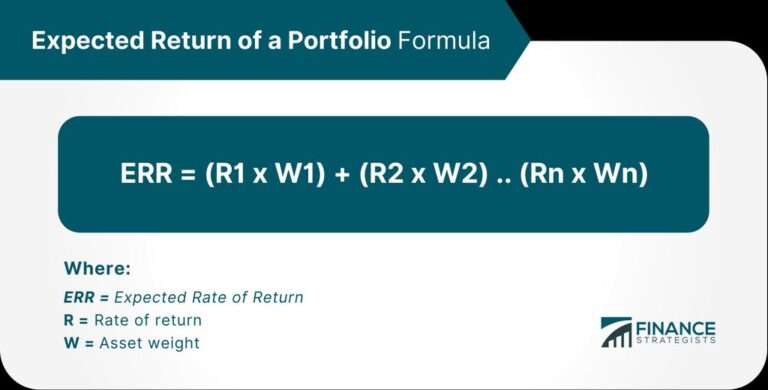The Freytag’s Pyramid: A framework for dramatic structure based on Gustav Freytag’s analysis of ancient Greek and Shakespearean drama.
Overview
Introduction
The article explores the concept of the Freytag’s Pyramid, a framework for dramatic structure based on Gustav Freytag’s analysis of ancient Greek and Shakespearean drama. It delves into the key insights of this framework and its application in storytelling. By understanding the five acts of Freytag’s Pyramid, including exposition, rising action, climax, falling action, and denouement, writers can create compelling narratives that engage and captivate audiences. This framework has stood the test of time and continues to be relevant in modern storytelling, serving as a guide for structuring narratives in various mediums such as literature, theater, and film. Through the examination of examples from ancient Greek drama and Shakespearean plays like Macbeth, Romeo and Juliet, and Hamlet, the article demonstrates how Freytag’s Pyramid enhances the dramatic impact of these works. Understanding the importance of Freytag’s Pyramid and its application in storytelling is essential for aspiring writers and creators seeking to craft compelling narratives that resonate with audiences. Discover how you can apply this framework to your own storytelling by visiting Unifire, a platform that empowers creators to scale authentic content.
Gustav Freytag’s Analysis
Gustav Freytag’s analysis of ancient Greek and Shakespearean drama provides key insights into the structure and progression of dramatic storytelling. His analysis identifies the five acts of Freytag’s Pyramid, which include the exposition, rising action, climax, falling action, and denouement. This framework allows for a comprehensive understanding of how a story unfolds and builds tension, leading to a satisfying resolution. By studying ancient Greek drama and Shakespearean plays, Freytag was able to identify common patterns and techniques used by playwrights to engage and captivate audiences. Understanding Freytag’s analysis can be a valuable tool for writers and storytellers, as it provides a roadmap for creating compelling narratives. To learn more about applying this framework in modern storytelling, visit Unifire for practical tips and resources.
Application in Ancient Greek Drama
In ancient Greek drama, the application of Freytag’s Pyramid is evident in the structured and well-defined dramatic arcs of the plays. The key insights of this article highlight the importance of Freytag’s analysis in understanding the dramatic structure of ancient Greek drama. The pyramid’s five acts, including the exposition, rising action, climax, falling action, and denouement, provide a comprehensive framework for analyzing and appreciating the narrative flow and emotional intensity of these plays. By following this framework, playwrights were able to create compelling stories that engaged audiences and conveyed powerful messages. Understanding and applying Freytag’s Pyramid in the context of ancient Greek drama allows us to gain a deeper appreciation for the artistry and impact of these timeless works.
To learn more about the application of Freytag’s Pyramid in ancient Greek drama and explore other aspects of dramatic structure, visit Unifire for a comprehensive guide and practical insights. Unifire is a platform that empowers creators to scale authentic content and unleash their storytelling potential. Discover how you can enhance your own storytelling abilities and create captivating narratives that resonate with your audience.
The Five Acts of Freytag’s Pyramid
Exposition
The exposition is the first stage of Freytag’s Pyramid, where the key elements of the story are introduced. It sets the stage for the narrative by providing essential background information, establishing the setting, and introducing the main characters. In this stage, the audience gets to know the protagonist and their goals, as well as the initial conflict or tension that drives the story forward. The exposition is crucial for laying the foundation of the story and engaging the audience from the very beginning. It creates a sense of curiosity and sets the tone for the rising action to come. In ancient Greek drama, the exposition often included a prologue or a chorus that provided additional context and commentary. In Shakespearean drama, the exposition is skillfully woven into the dialogue and actions of the characters, captivating the audience with their motivations and relationships. Understanding the importance of the exposition is essential for writers and storytellers to effectively hook their audience and establish a solid narrative structure.
Rising Action
After the exposition, the narrative of a story enters the rising action phase. This is where the conflict and tension start to build up, and the plot begins to unfold. The rising action serves as a bridge between the exposition and the climax, and it is crucial for developing the characters, their motivations, and the obstacles they face. In this phase, the stakes are raised, and the audience becomes more invested in the story. It is during the rising action that the main conflicts and challenges are introduced, creating anticipation and suspense. The rising action sets the stage for the climax, which is the turning point of the story. It is at this point that the tension reaches its peak, and the outcome of the story becomes uncertain. To fully understand the significance of the rising action, let’s explore its application in ancient Greek drama and how it influenced the works of playwrights like Sophocles and Euripides.
Climax
The climax is the turning point of the story, where the tension reaches its peak and the outcome of the conflict becomes clear. In Freytag’s Pyramid, the climax is the most intense and dramatic moment of the narrative. It is the moment when the protagonist faces their greatest challenge and makes a crucial decision that determines the course of the story. In ancient Greek drama, the climax often involves a confrontation between the protagonist and their antagonist, leading to a resolution of the conflict. In Shakespearean drama, the climax is marked by a major turning point in the plot, such as the death of a main character or the revelation of a long-held secret. The climax is a pivotal moment that captivates the audience and sets the stage for the resolution of the story.
CTA: Learn more about the power of storytelling and dramatic structure by joining Unifire’s community of Smart Creators.
How to Create a Compelling Climax:
- Build tension throughout the story: Create conflicts and obstacles that gradually increase the stakes for the protagonist.
- Raise the stakes: Introduce a major challenge or threat that forces the protagonist to make a difficult decision.
- Create a sense of urgency: Use pacing, dialogue, and descriptive language to heighten the tension and engage the audience.
- Make the climax meaningful: Ensure that the outcome of the conflict has significant consequences for the protagonist and the overall story.
- Provide resolution: After the climax, allow the story to reach a resolution that satisfies the audience and ties up loose ends.
By following these steps, you can create a compelling climax that keeps your audience on the edge of their seats and leaves a lasting impact.
Application in Shakespearean Drama
Macbeth
Macbeth is one of Shakespeare’s most renowned tragedies that exemplifies the dramatic structure of Freytag’s Pyramid. The play follows the journey of Macbeth, a noble warrior, who is driven to madness and destruction by his ambition and the manipulation of supernatural forces. The exposition sets the stage by introducing the characters and the conflict. The rising action builds tension as Macbeth’s ambition grows and he commits heinous acts to secure his power. The climax occurs when Macbeth reaches the peak of his power but is ultimately consumed by guilt and paranoia. Through the application of Freytag’s Pyramid, Shakespeare masterfully crafts a narrative that captivates audiences and explores the consequences of unchecked ambition. Macbeth serves as a powerful example of how the elements of Freytag’s Pyramid can be utilized to create a compelling and impactful story.
Romeo and Juliet
Romeo and Juliet, one of Shakespeare’s most famous tragedies, exemplifies the dramatic structure of Freytag’s Pyramid. The play begins with an exposition, introducing the feuding families of the Montagues and Capulets, as well as the star-crossed lovers, Romeo and Juliet. The rising action unfolds as Romeo and Juliet secretly marry and navigate the challenges of their forbidden love. The climax occurs when Romeo kills Juliet’s cousin, Tybalt, leading to a series of tragic events that ultimately result in the deaths of the young lovers. This tragic ending serves as a powerful reminder of the consequences of unchecked passion and societal conflict. Romeo and Juliet showcases the enduring relevance of Freytag’s Pyramid in Shakespearean drama, as it effectively builds tension and emotion throughout the story. To learn more about the application of Freytag’s Pyramid in other Shakespearean plays and its importance in modern storytelling, continue reading the article.
Hamlet
Hamlet, one of Shakespeare’s most famous tragedies, exemplifies the application of Freytag’s Pyramid in dramatic structure. The play follows the five acts of the pyramid, starting with the exposition where the audience is introduced to the characters and the setting. The rising action builds tension as Hamlet discovers his father’s murder and seeks revenge. The climax occurs when Hamlet confronts and kills Claudius, the man responsible for his father’s death. The falling action and denouement provide resolution as the remaining characters deal with the aftermath of the tragedy. Hamlet showcases the power of Freytag’s Pyramid in creating a compelling and emotionally impactful story. The analysis of Hamlet through this framework allows for a deeper understanding of the play’s structure and themes, highlighting the timeless relevance of Freytag’s insights in Shakespearean drama.
CTA: Learn more about the power of dramatic structure in storytelling with Unifire’s comprehensive guide on narrative techniques and plot development.
How to Apply Freytag’s Pyramid in Your Own Writing
- Start with a clear exposition that introduces the characters and setting.
- Build tension through rising action, gradually revealing conflicts and obstacles.
- Reach a climactic moment where the main conflict is confronted and resolved.
- Provide a falling action and denouement that wraps up loose ends and offers closure.
- Consider the emotional impact and themes you want to convey throughout each act.
By following these steps and understanding the key elements of Freytag’s Pyramid, you can create compelling narratives that engage and captivate your audience.
Conclusion
Importance of Freytag’s Pyramid
The Freytag’s Pyramid is an essential framework for understanding and analyzing the dramatic structure of a story. It provides a clear and organized way to examine the progression of a narrative, from the exposition to the climax and resolution. By following the five acts of Freytag’s Pyramid, writers and storytellers can effectively build tension and create a compelling narrative arc. This framework has been widely used in ancient Greek drama, as it helps to engage the audience and evoke emotional responses. Moreover, the application of Freytag’s Pyramid in Shakespearean plays such as Macbeth, Romeo and Juliet, and Hamlet showcases its timeless relevance in storytelling. Understanding the importance of Freytag’s Pyramid allows writers to craft impactful and engaging stories that resonate with audiences. By incorporating this framework into their storytelling process, writers can create narratives that captivate readers and leave a lasting impression.
CTA: Discover how Unifire can enhance your storytelling process and help you create compelling narratives.
How to Use Freytag’s Pyramid:
- Identify the key elements of each act: exposition, rising action, climax, falling action, and resolution.
- Map out the progression of your story using Freytag’s Pyramid.
- Build tension and suspense by gradually increasing the stakes and conflicts throughout the rising action.
- Reach a climactic moment that reveals the central conflict and creates a turning point in the story.
- Allow the story to gradually resolve and provide closure to the audience.
By following these steps and utilizing Freytag’s Pyramid, you can create compelling narratives that keep readers engaged and emotionally invested.
Relevance in Modern Storytelling
In modern storytelling, the relevance of Freytag’s Pyramid cannot be overstated. The framework provides a solid structure for creating compelling narratives that captivate audiences. By following the five acts of the pyramid – exposition, rising action, climax, falling action, and denouement – storytellers can effectively build tension, create emotional arcs, and deliver satisfying resolutions. This structure ensures that the story unfolds in a logical and engaging manner, keeping the audience hooked from beginning to end. Moreover, the pyramid’s emphasis on the climax as the turning point of the story allows for heightened dramatic impact and memorable moments. Relevance in Modern Storytelling
| Key Insights |
|---|
| The relevance of Freytag’s Pyramid in modern storytelling cannot be overstated. |
The practical application of Freytag’s Pyramid in modern storytelling can be seen in various forms of media, including films, novels, and even marketing campaigns. By understanding and implementing this framework, storytellers can craft narratives that resonate with audiences on a deep emotional level. The pyramid’s structure not only guides the overall plot progression but also helps create well-rounded characters, meaningful conflicts, and impactful resolutions. It provides a roadmap for storytellers to navigate the complexities of storytelling and ensure that their narratives have a lasting impact. Practical Application in Modern Storytelling
- Use the five acts of Freytag’s Pyramid to structure your story
- Build tension and emotional arcs through the rising action
- Create a compelling climax that serves as the turning point
- Resolve conflicts and provide a satisfying denouement
Incorporating Freytag’s Pyramid into your storytelling toolkit can elevate your narratives to new heights and captivate your audience in powerful ways. Whether you’re a filmmaker, writer, or marketer, understanding and applying this framework can make a significant difference in the impact and resonance of your storytelling. CTA: Ready To Start Getting A Torrential Downpour of Content?
Your content teams spend all their time on manual tasks. Help them become super efficient. Upload
How to Incorporate Freytag’s Pyramid in Your Storytelling
- Start with a clear exposition that introduces the characters, setting, and initial conflict.
- Build tension and escalate the stakes through the rising action, introducing obstacles and challenges for the protagonist.
- Reach the climax, the highest point of tension and the turning point of the story.
- Follow the falling action, where the consequences of the climax unfold and conflicts start to resolve.
- Conclude with a denouement that provides closure and wraps up loose ends.
By following these steps and utilizing the principles of Freytag’s Pyramid, you can create impactful and engaging stories that resonate with your audience.
Future Implications
The analysis and application of Freytag’s Pyramid in ancient Greek and Shakespearean drama provide valuable insights into the structure and development of compelling narratives. This framework offers a comprehensive understanding of the key elements of dramatic storytelling, including the exposition, rising action, climax, and resolution. By studying the works of ancient Greek playwrights and Shakespeare, we can learn how to effectively engage audiences through well-crafted plots and character arcs. Understanding the principles of Freytag’s Pyramid can also be applied to modern storytelling, helping contemporary writers and filmmakers create emotionally impactful and structurally sound narratives. As technology and storytelling techniques continue to evolve, the relevance of Freytag’s Pyramid remains strong, serving as a guide for crafting captivating stories that resonate with audiences. Embracing this framework can empower creators to scale their authentic content and leave a lasting impact on the world. To learn more about how Unifire can assist you in enhancing your storytelling skills and reaching a wider audience, visit Unifire.
In conclusion, Unifire is the ultimate tool for extracting summaries, keywords, and titles from your podcast and repurposing your content. With Unifire, you can save time and effort by automating the process of creating engaging content. Whether you’re a podcaster, content creator, or marketer, Unifire can help you optimize your content strategy and reach a wider audience. Don’t miss out on the opportunity to enhance your content creation workflow. Visit Unifire today and start maximizing the potential of your podcast content!








